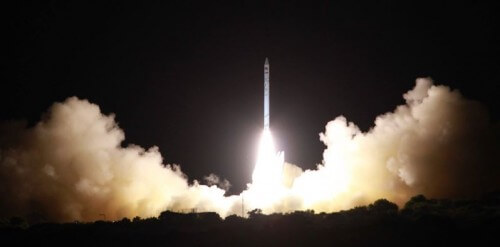The Ministry of Defense and the Aerospace Industry launched the "Ofek 10" satellite into space, four years after the launch of Ofek 9. Unlike its predecessors, Ofek 10 is a radar (SAR) satellite

The Space Directorate operating within the framework of the Ministry of Defense, and the Aerospace Industry tonight, April 9.4.2014, 22 at 15:10, launched the "Ofek XNUMX" satellite into space. The launch was carried out using a satellite launcher of the "Comet" type, from the Palmachim experimental field in the center of the country.
Upon placing the satellite in orbit around the Earth, the satellite will undergo a series of tests, designed to verify its integrity and level of performance.
The "Ofek 10" satellite is a radar-based observation satellite (SAR), with advanced photography capabilities during the day, at night, and in any weather.
The Ministry of Defense, under the leadership of Mapat, and through the aerospace industry and other industries, developed and produced the "Ofek 10" satellite as well as the "Shavit" launcher. News 10 reports that the two rocket engines for its satellite launcher were developed and manufactured by the Givon plant of the military industry. The third stage of the missile is manufactured by Rafael.
This launch was made almost 4 years after the satellite was launched on June 23, 2010 Ofek 9, which was still a standard optical imaging satellite.
Ofek 10 is the second Israeli radar satellite launched. Before it, the TECSAR satellite was launched in 2008. It carries a SAR-type radar observation probe, and is designed to provide imagery during the day, at night, and in all weather conditions, including penetration through clouds. The satellite is operated from the IAA ground station. The technology used by Texar was discussed with NASA for future use in spacecraft that would orbit Venus, which is known to be covered in clouds and whose bottom is not visible to ordinary optical satellites.

5 תגובות
The launch was on 22.06 according to Israeli time.
One should be sent to Venus.
experience
And now to the moon and it is possible
Entire parts of the central region saw and heard the launch and remembered Bibi's stories about the Iranians, for a moment we thought it was an Iran Humus missile